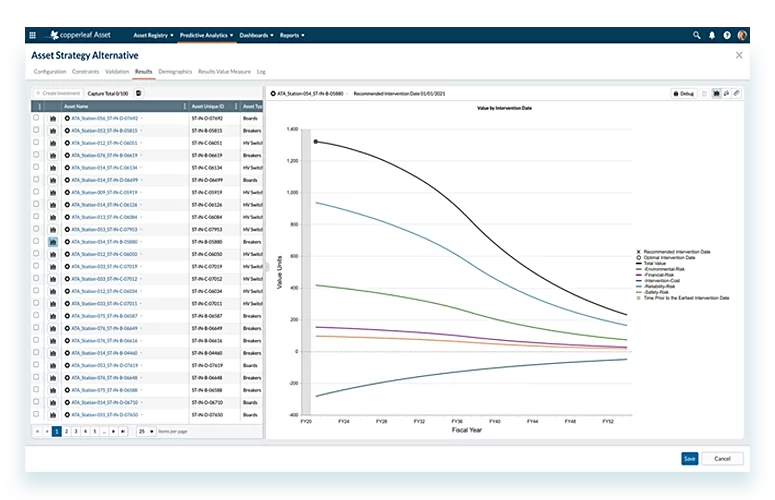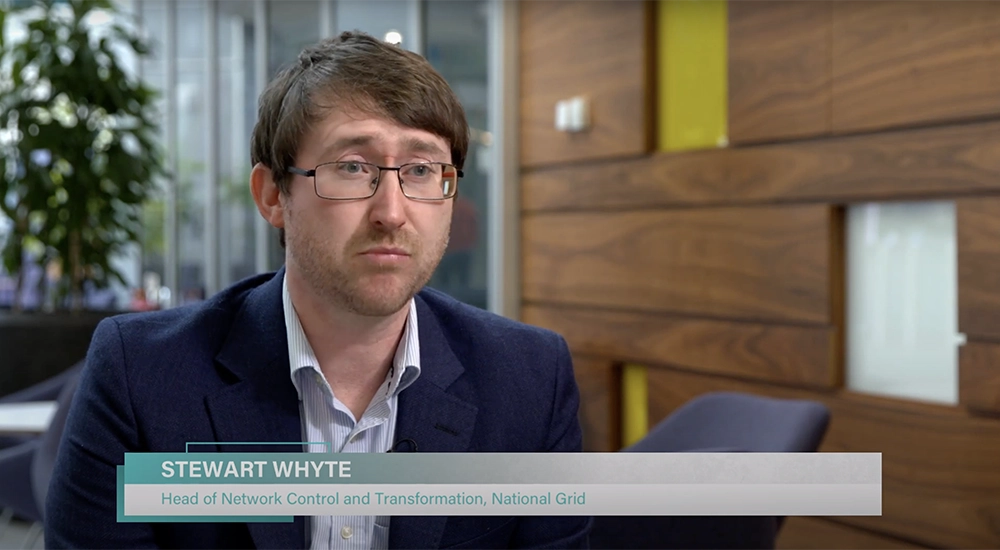Are you concerned your assets may be exposed to reliability and failure risks by underinvesting? Do you have a hard time predicting which assets require intervention—and when?
Proactively manage risk exposure
Copperleaf® helps organizations accurately predict sustainment needs and plan proactive interventions to manage the business to an agreed risk profile. Our software enables operations and maintenance professionals to:
- Leverage available asset information to model asset condition and risk, and how it changes over time
- Justify the resources required for asset interventions
- Identify which interventions to defer when there are funding or cash flow constraints
- Create, analyze, and compare asset sustainment strategies—to make informed decisions that maximize value while proactively managing risk
Planning for the long term
In this video, asset investment planning professionals from Network Rail, National Grid, and Northumbrian Water discuss how the Copperleaf Decision Analytics Solution is helping them make the right investments at the right time and demonstrate value for money from investments more accurately.

Capital vs. O&M investments: what’s the cost to customers?
An investment that costs $100,000 in capital is typically much easier to get approved than one that costs $100,000 in O&M dollars because almost every utility is sensitive to rate impacts. The immediate rate impact of O&M spend is much greater than capital spend, therefore O&M spending becomes an important focus to minimize rate increases. Which option is better for customers?
Find out how the Copperleaf solution can help your organization understand the total O&M impact of a portfolio of investments.

Maintain? Repair? Replace? A deep dive on modeling multiple asset interventions
Organizations that manage critical infrastructure rely on a wide range of asset types to provide their services. These asset populations can include millions of assets of varying complexity and cost. Modeling asset condition and the related probability of asset failure is non-trivial and costly.
Copperleaf Asset™ can help your organization define multiple intervention types and apply different strategies to determine the optimal mix of interventions and their timing.

Modeling risk for decision making
Accurate risk modeling is crucial to improving investment decision making for organizations managing critical infrastructure. In this webinar, Stan Coleman, Copperleaf’s Chief Architect, discusses how to realistically assess asset failure risks by considering the consequences of different failure modes. He explains:
- How to model external risks and project execution risks
- How to aggregate and monetize these risks
- Why this process is necessary for effective decision making

AIPM: A best practice of ISO 55000
ISO 55000 describes best practices in asset management that help organizations realize the maximum value from their assets. This white paper addresses the following questions:
- What is ISO 55000 and which areas of the organization are impacted?
- What is Asset Investment Planning and Management (AIPM) and why is it a best practice of ISO 55001?
- How do Copperleaf’s solutions support ISO 55001 requirements?
Adopted by Industry Leaders

Multi-sector asset investment planning at RNG
Rheinische NETZGesellschaft mbH (RNG) manages over 30,000 km of distribution networks for electricity, gas, water, and district heating in Germany. The Copperleaf Decision Analytics Solution is helping RNG manage risks and project portfolios across multiple networks and asset owners, and align its Asset Investment Planning and Management (AIPM) processes with the ISO 55000 asset management standard.

Making the highest-value asset investment decisions
Network Rail selected the Copperleaf Decision Analytics Solution to help manage Britain’s railway infrastructure, which includes 20,000 miles of track, 30,000 bridges, tunnels and viaducts, and thousands of signals, level crossings and stations. The Copperleaf solution provides an enterprise-wide platform for strategic asset modeling and investment planning. It is being used to forecast work volumes, outputs, and expenditure across Network Rail’s entire asset base.



